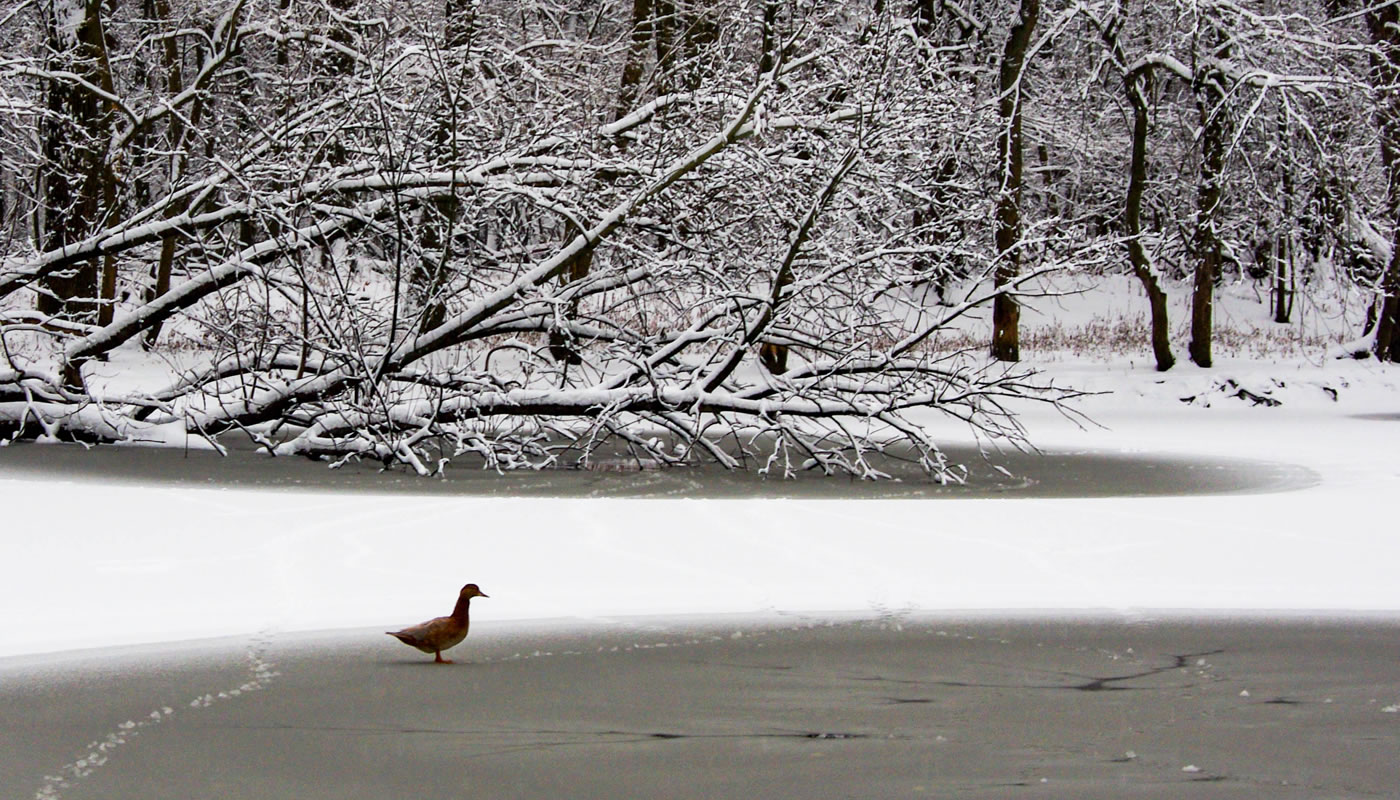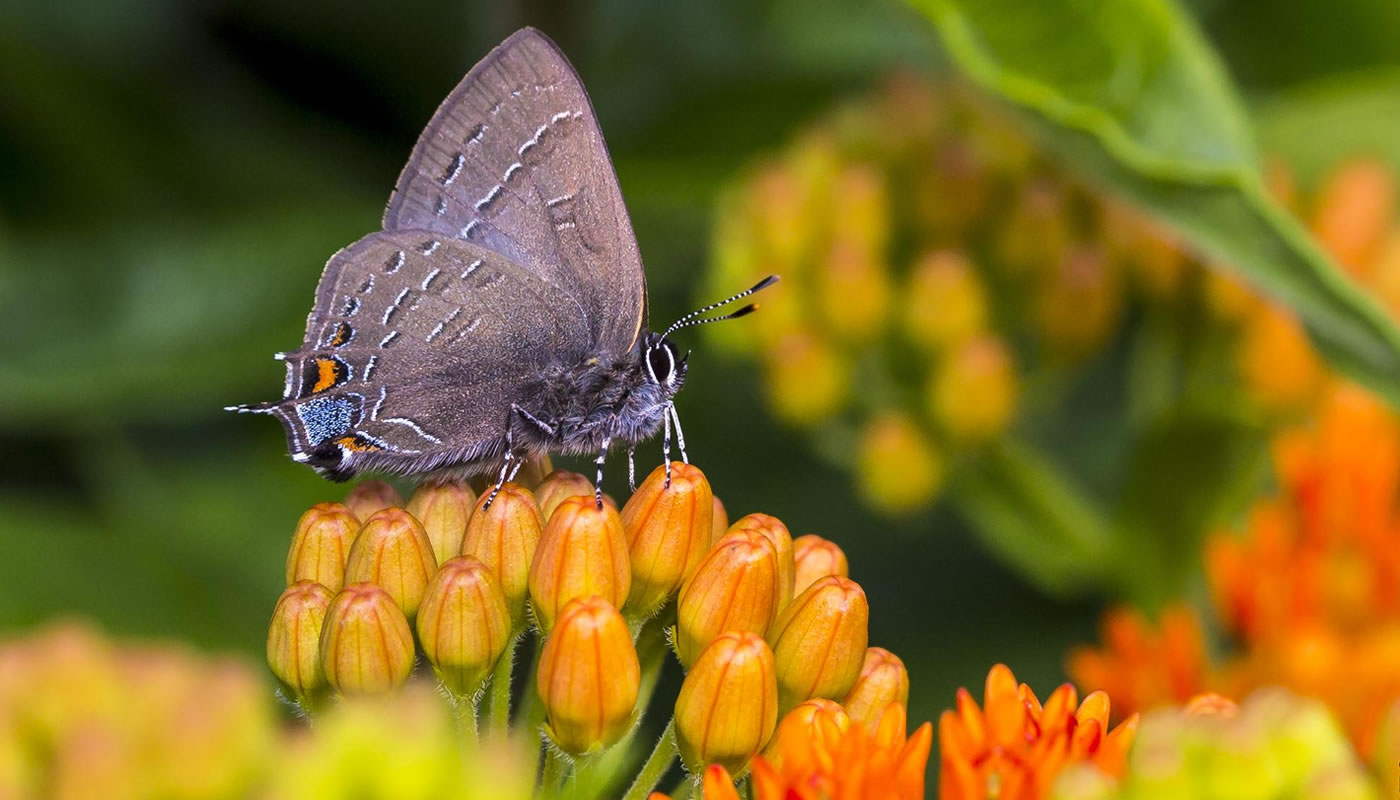We talked with two of our volunteers and talented amateur nature photographers to learn what inspires them. Fidencio Marbella and Kris DaPra share their advice on how you too can give nature photography a try.
Kris DaPra
How did you get into nature photography?
Kris DaPra: As a child I camped and backpacked extensively across the US and Canada. My father was a wonderful photographer and I wanted to be just like him.
What is the best photograph you have ever taken? Can you tell me the story behind it?
KD: I have a few photos that I enjoy and am proud of but aren’t necessarily technically perfect. They tell a story or remind of a special event in my life. I especially love the photo of a Striped Hairstreak butterfly on Butterfly weed—proof of what you can attract to your yard and support with native gardening.
What are your favorite FPCC sites for photography?
KD: I especially like sites with changes in topography or water features. In the northwest region that would include Busse, Poplar Creek, Spring Creek and of course Bluff Spring Fen. Unfortunately, Bluff Spring Fen has had much negative site impact and damage due to photographers chasing insects off trail.
Do you have a favorite subject or favorite season in which to shoot?
KD: Favorite seasons are spring and fall. Summer doesn’t have the depth of color and light that spring and fall offer. Winter is great for black and white photography.
Do you have any tips for aspiring nature photographers? How does one go about selecting the right equipment?
KD: I don’t think there is any right equipment. Whatever you can afford can turn out wonderful photos. Having an eye for composition is free and the best equipment you’ll ever need. If you have a more advanced camera, learn how to use the aperture priority mode or give manual settings a chance.

Fidencio Marbella
How did you get into nature photography?
Fidencio Marbella: I actually didn’t get started with nature photography until around the time I started volunteering at the Wolf Road Prairie in Westchester. I began working a new job at the public library in Westchester and thought it would be a good idea to start volunteering with various community groups. Since I thoroughly enjoyed the volunteer work at Wolf Road I began signing up at other FPCC sites and realized how beautiful and diverse the Preserves are. I’ve always had an interest in photography but never did much nature photography until my volunteerism showed me all that the Preserves have to offer. I had recently switched over to digital photography, which made shooting so much easier and less costly and allowed me to experiment; to begin learning about what works and what doesn’t and probably most importantly, to just take more photographs.
What is the best photograph you have ever taken? Can you tell me the story behind it?
FM: This may not be my “best” photograph but it’s definitely my favorite. I had just purchased a new digital camera and stopped by Trailside Museum in River Forest to practice. There’s a very picturesque pond behind the parking lot and there was a light snow falling. I walked to the edge of the pond and found this forlorn looking duck standing there and thought that would make a nice photo, with the curves of the forming ice and the black and white look of the background. What makes this my favorite though isn’t necessarily the photograph itself but more of what I remember about the scene. After taking the photo I was lucky enough to experience a few moments of that special kind of quiet that you only seem to get from newly fallen snow.
What are your favorite Forest Preserves sites for photography?
FM: For wildflowers it’s tough to beat Wolf Road Prairie, but Thatcher Woods has some very nice patches of bluebells and bloodroot while McCormick Woods and Bemis South both have lots of colorful jewelweed later in the year. Thatcher Woods is probably my favorite for fall colors, especially the area just north of Trailside Museum, across Chicago Avenue. That being said, there are a whole lot more sites out there that I haven’t yet had time to explore.
Do you have a favorite subject or favorite season in which to shoot?
FM: My favorite time is springtime with all those spring ephemerals but the great thing about the preserves is the diversity. Autumn, of course, can be incredibly colorful and even winter, if you’re willing to endure some cold, can present some beautiful scenery. Summer is when I begin photographing butterflies, moths and other insects.
Do you have any tips for aspiring nature photographers? How does one go about selecting the right equipment?
FM: The equipment, to start with, probably isn’t too critical as I’ve seen some incredibly beautiful photos taken with smartphones. I prefer digital SLRs since I have the flexibility of using different lenses and different lens filters. My first digital camera was a simple point and shoot, and that was a great tool for me to learn more about digital photography, before I took the plunge and bought my first DSLR.
I don’t have a lot of camera gear but some of the basics I have, aside from my digital camera, include a zoom lens, a tripod and a polarizing filter. The zoom lens helps bring some of the more distant objects closer to you, especially nice if you don’t want to spook any wildlife you might be photographing. The tripod helps me create sharper photos since using one will eliminate any blur caused by your hand movement and a polarizing filter really helps deepen the fall colors and sky.
I guess some of the final tidbits include not being afraid to shoot in less than ideal conditions – cloudy or foggy days can sometimes produce the best results, and lastly, simply shoot as much as you can since that’s the greatest way to learn what works for you and what you can do better. The great thing about digital is if some photo doesn’t work out, just hit delete and try again.

